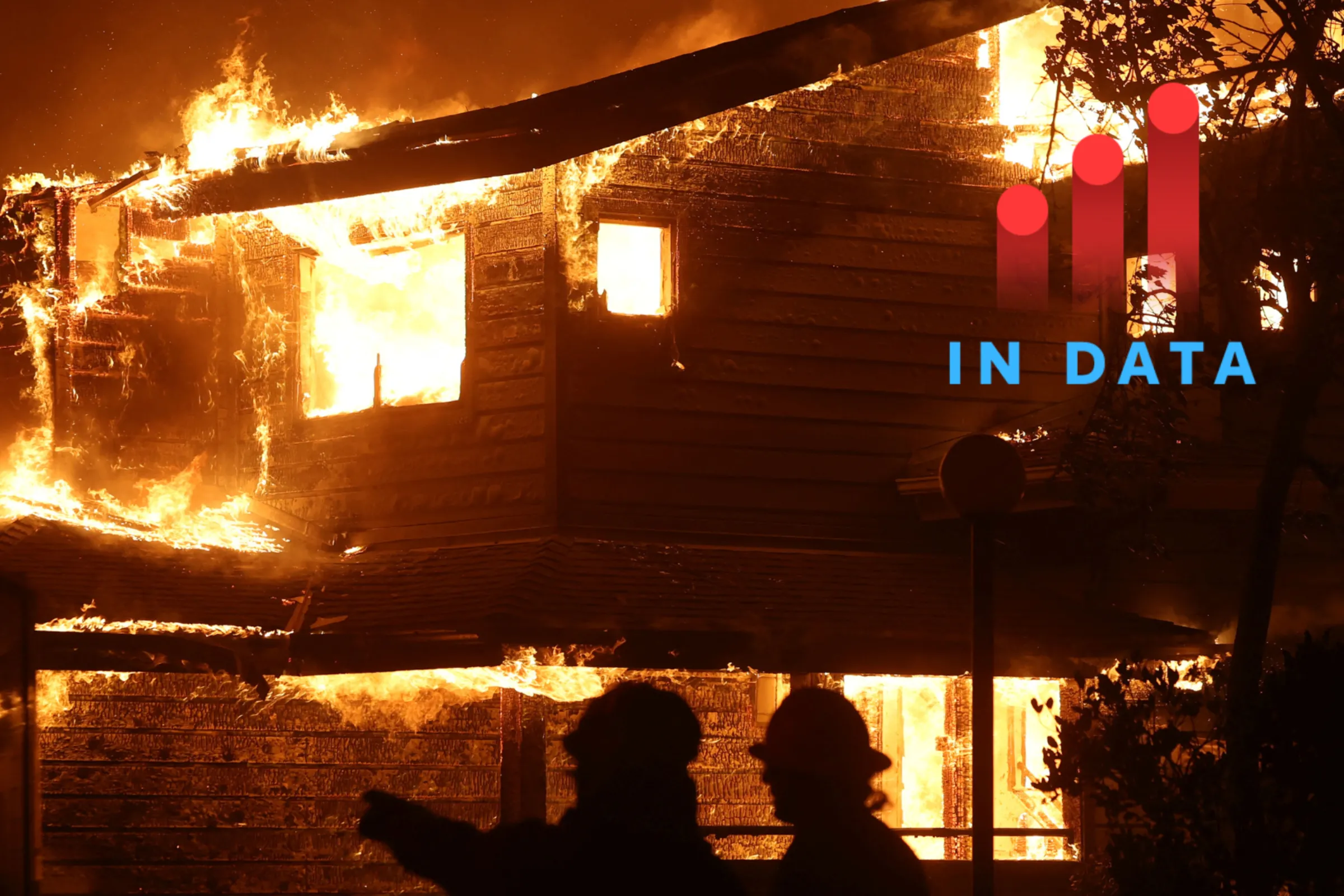Context is powered by the Thomson Reuters Foundation Newsroom.
Our Standards: Thomson Reuters Trust Principles

Two firefighters stand near a burning home during the Eaton Fire in Pasadena, California, U.S., January 7, 2025. REUTERS/Mario Anzuoni
Biden administration released a first-of-its-kind look at climate-related risks in homeowners insurance in January.
MEXICO CITY/RICHMOND, Virginia - Climate change is fast upending home insurance rates in the United States – almost regardless of where one lives.
In the aftermath of the Los Angeles area wildfires, California's largest private insurer requested significantly higher rates for homeowners from May as it dealt with costly claims, while there were widespread reports that insurers were dropping customers before the disaster first struck in early January.
Precisely where and how much insurance rates have risen and are projected to rise will be instrumental in how the U.S. housing market adapts to climate change in the long run.
To that end, the U.S. Treasury Department – with the help of the National Association of Insurance Commissioners (NAIC) and state regulators – has released a first-of-its-kind report examining cost and changes over time of metrics like insurance premiums and non-renewal rates across the country.
The report is unprecedented in its scope, covering more than 330 insurers and more than 246 million homeowners insurance policies from 2018 through 2022.
The report "identifies alarming trends of rising costs of insurance – to consumers and insurers themselves – as well as lack of availability of insurance, all of which threaten the long-term prosperity of American families," said former Treasury Secretary Janet Yellen in January, when the report was released at the tail end of the Biden administration.
What are the major takeaways? Here's what you need to know:
As climate change fuels hotter, drier conditions that help increase the intensity and frequency of wildfires and storms, insurance companies have been exiting markets in high-risk areas, helping push up costs.
"Consumers living in the top 20 percent of ZIP Codes with the highest expected annual losses to buildings from climate-related perils paid average inflation-adjusted premiums per policy of $2,321 between 2018 and 2022 — 82 percent more than the average for the bottom 20 percent of ZIP Codes," the Treasury report said.
In the wake of the wildfires in the Los Angeles area, State Farm officials requested an emergency 22% rate hike for homeowners from May, saying the fires "will collectively be the costliest in the history of the company."
In addition to rising costs, there have been widespread reports of homeowners suddenly getting dropped from their insurance coverage in recent years, often with little notice or warning.
That can force consumers into state-backed or state-supported insurers of last resort, which have taken on more policies in disaster-prone states in recent years.
"Consumers in the highest risk ZIP codes faced higher policy nonrenewal rates, with an average for the five-year period of 1.61 percent, about 80 percent higher than the average in the lowest risk ZIP Codes," the report said.
"Moreover, average nonrenewal rates increased by substantially more in the highest risk areas than in the lowest risk areas over this period, which indicates that consumers in these highest risk areas faced decreasing availability over the five-year period."
The data set is admittedly incomplete, as a handful of states did not participate in a data call from NAIC that helped undergird the report. It also measured the markets from 2018-2022, so data for the past two years is not included.
The report said the summary findings might not fully capture the "many dimensions" of cost and availability of homeowners insurance, noting that inflation and the rise in replacement and reconstruction costs were significant during the time period and homeowners might have found options in other markets.
The report also said it includes the impact covered by standard homeowners insurance policies, which typically don't cover damages from flooding.
American Property Casualty Insurance Association (APCIA) President and CEO David A. Sampson had said in response to the report that homeownership costs are on the rise primarily because of inflation and cautioned against drawing too many conclusions from the data.
"Unfortunately, Treasury's release provides an incomplete explanation about the affordability and availability of insurance," Sampson said.
"Insurance availability can be best improved by allowing competitive private markets to appropriately price risk according to expected costs, while reducing government rate suppression and policy from constraints."
But U.S. Senator Sheldon Whitehouse, a Democrat from Rhode Island who held a series of hearings on climate risk when he chaired the budget committee, said "there should be no more doubt that climate change is one of the biggest financial risks to Americans today".
"Climate change is not only making life's essentials more expensive, but also setting in motion a risk of cascading failures — from the insurance market to the mortgage market to a property values collapse — that ends in economy-wide catastrophe," Whitehouse had said in response to the Treasury report.
(Reporting by Diana Baptista and David Sherfinski; Editing by Ana Nicolaci da Costa.)
Context is powered by the Thomson Reuters Foundation Newsroom.
Our Standards: Thomson Reuters Trust Principles